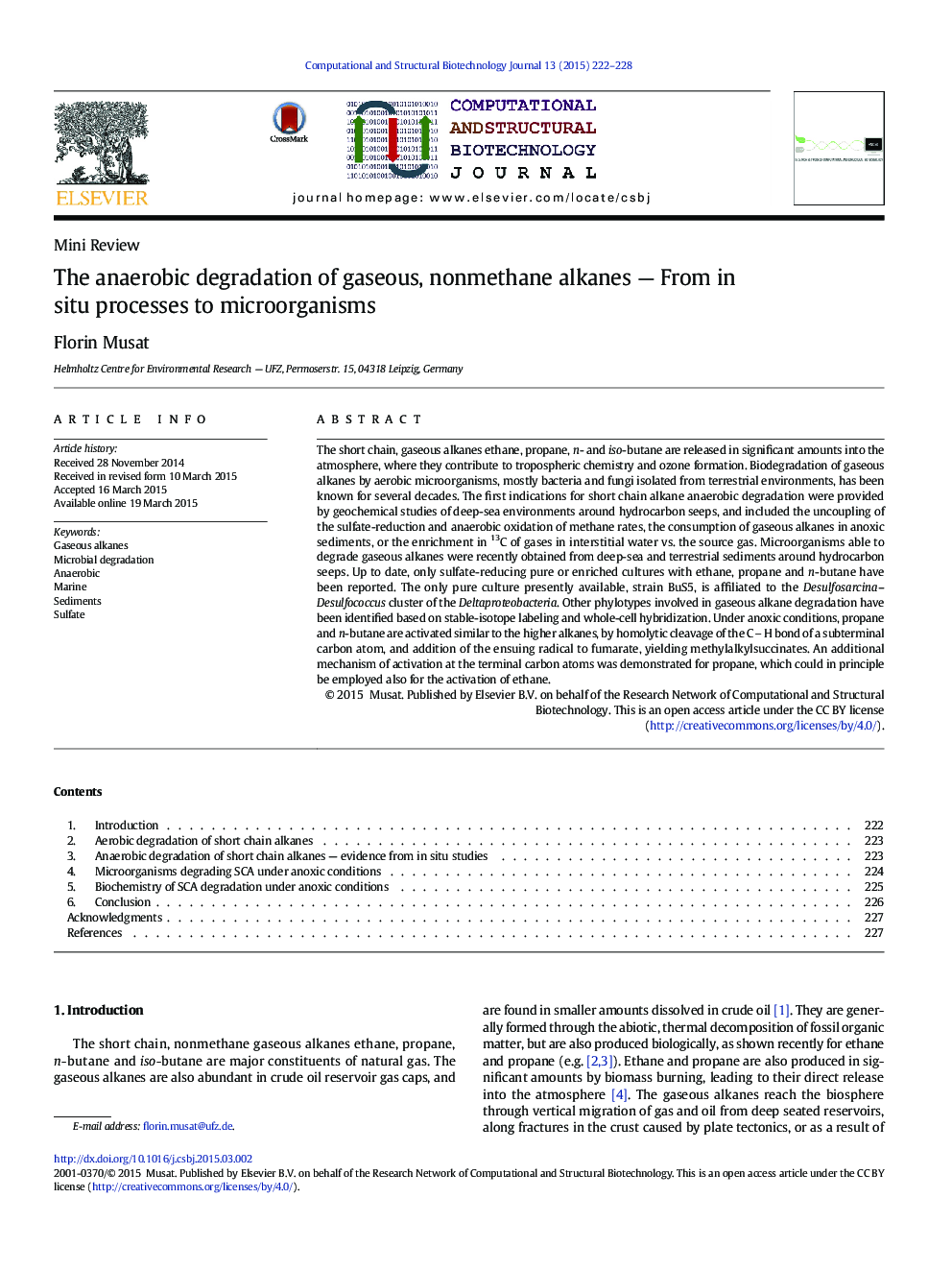| کد مقاله | کد نشریه | سال انتشار | مقاله انگلیسی | نسخه تمام متن |
|---|---|---|---|---|
| 2079178 | 1545072 | 2015 | 7 صفحه PDF | دانلود رایگان |

The short chain, gaseous alkanes ethane, propane, n- and iso-butane are released in significant amounts into the atmosphere, where they contribute to tropospheric chemistry and ozone formation. Biodegradation of gaseous alkanes by aerobic microorganisms, mostly bacteria and fungi isolated from terrestrial environments, has been known for several decades. The first indications for short chain alkane anaerobic degradation were provided by geochemical studies of deep-sea environments around hydrocarbon seeps, and included the uncoupling of the sulfate-reduction and anaerobic oxidation of methane rates, the consumption of gaseous alkanes in anoxic sediments, or the enrichment in 13C of gases in interstitial water vs. the source gas. Microorganisms able to degrade gaseous alkanes were recently obtained from deep-sea and terrestrial sediments around hydrocarbon seeps. Up to date, only sulfate-reducing pure or enriched cultures with ethane, propane and n-butane have been reported. The only pure culture presently available, strain BuS5, is affiliated to the Desulfosarcina–Desulfococcus cluster of the Deltaproteobacteria. Other phylotypes involved in gaseous alkane degradation have been identified based on stable-isotope labeling and whole-cell hybridization. Under anoxic conditions, propane and n-butane are activated similar to the higher alkanes, by homolytic cleavage of the CH bond of a subterminal carbon atom, and addition of the ensuing radical to fumarate, yielding methylalkylsuccinates. An additional mechanism of activation at the terminal carbon atoms was demonstrated for propane, which could in principle be employed also for the activation of ethane.
Journal: Computational and Structural Biotechnology Journal - Volume 13, 2015, Pages 222–228